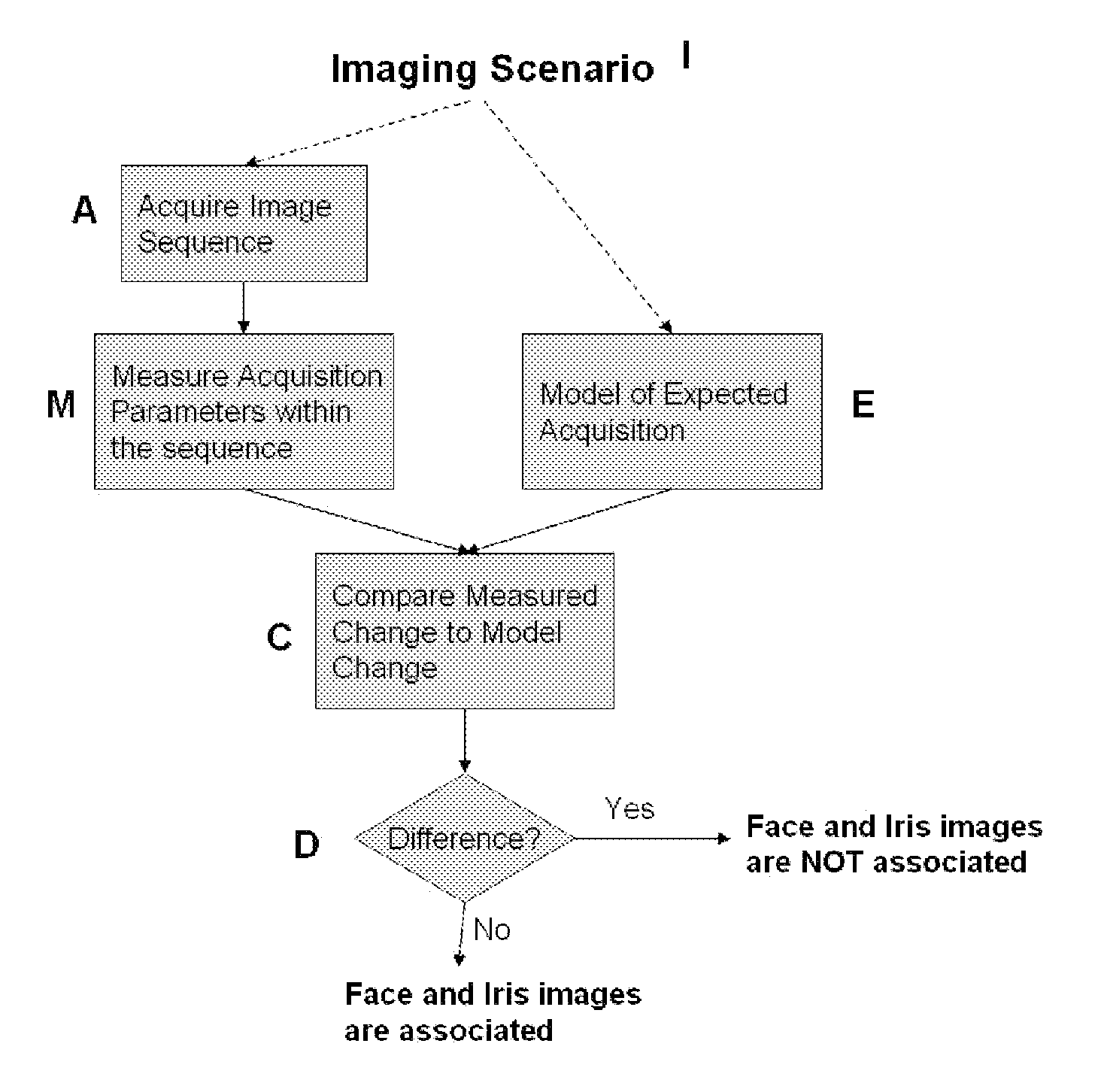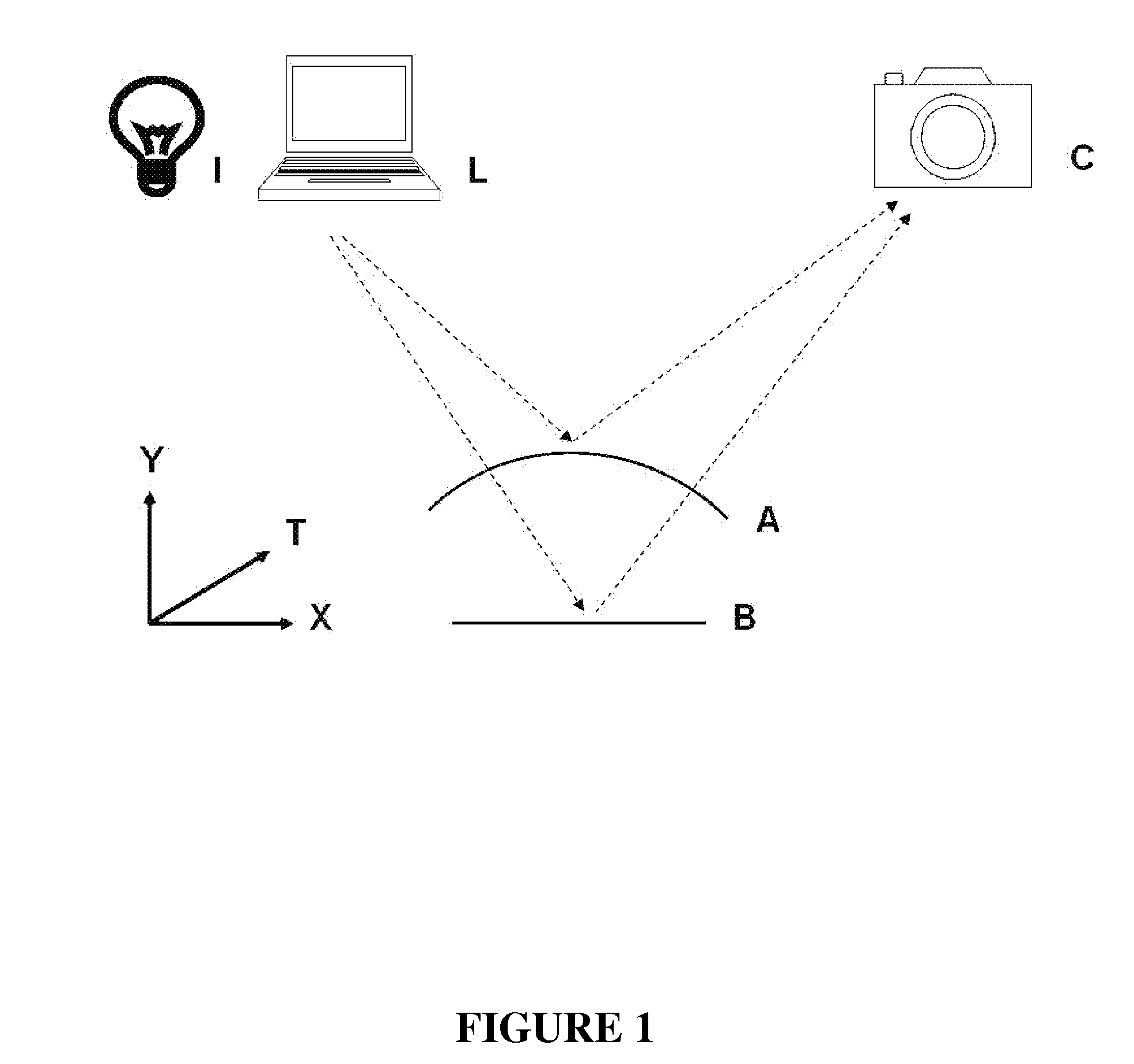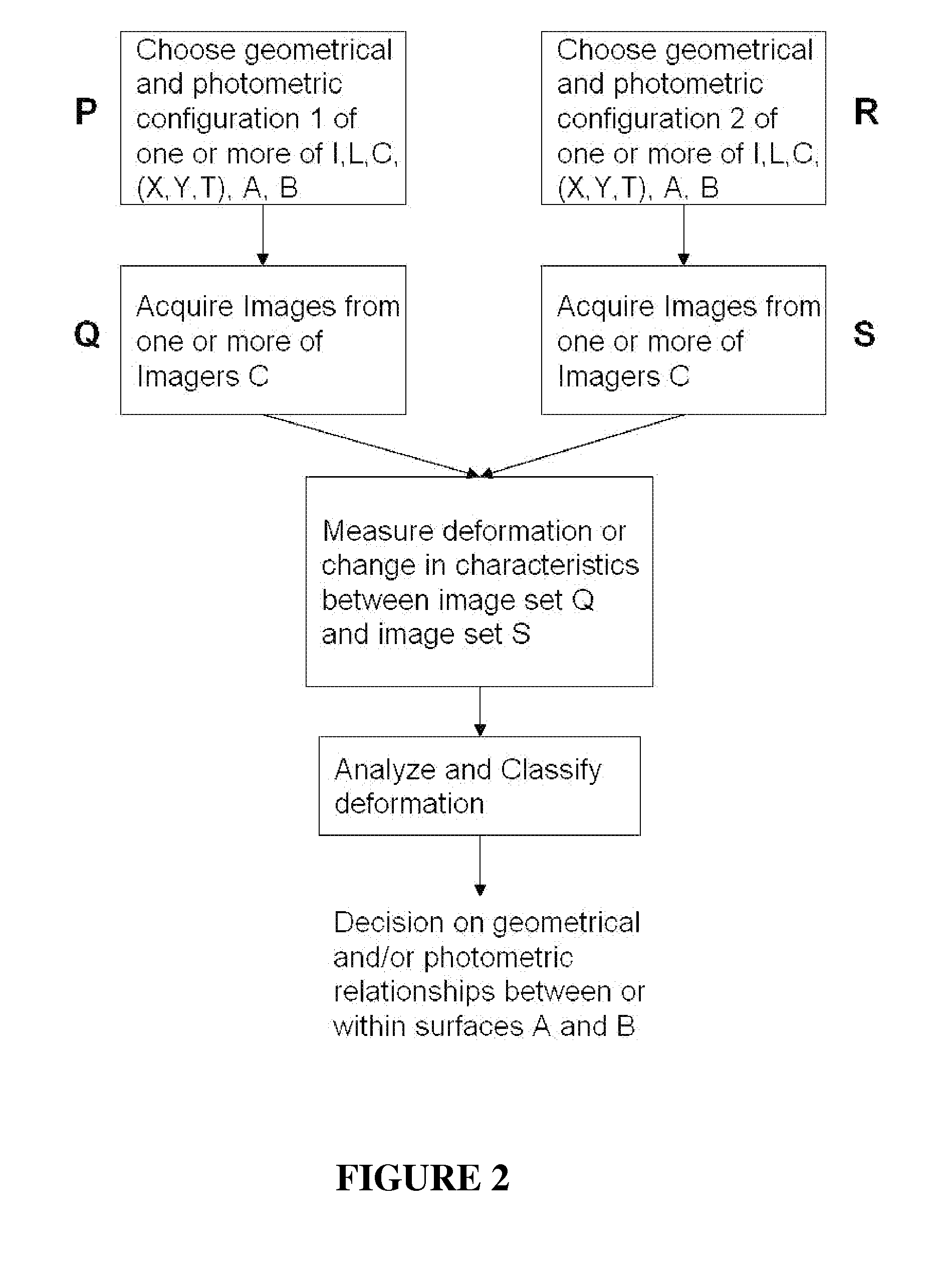Methods for performing biometric recognition of a human eye and corroboration of same
a biometric recognition and human eye technology, applied in the field of biometric recognition of human eye and corroboration of same, can solve the problems of time required to obtain and process data, the possibility of spoofing, and the irritation a person may feel, and achieve the effect of simple approach and placement of leds
- Summary
- Abstract
- Description
- Claims
- Application Information
AI Technical Summary
Benefits of technology
Problems solved by technology
Method used
Image
Examples
example implementation
[0082 Methods
[0083]There are many methods for performing steps M,E,C,D in FIG. 5. We present a preferred set of methods as an example. First, if the images acquired in step A are labeled I1,I2,I3,I4 etc., then a difference image sequence D1,D2,D3,D4 is computed by subtracting adjacent frames. For example, D1=I2−I1, and D2=I3−I2 etc. If the camera sensor is stationary, then this differencing removes the background from processing meaning that all resultant intensities in the sequence are due to the moving person. Note that this approach is only used if only the user is moving. In cases of a lens that zooms, this step would not be performed since the background also moves. Second, flow analysis is performed between successive image pairs. There are many methods known in the art for performing flow analysis. An example is Bergen et. al, “Hierarchical Motion Analysis”, European Conference on Computer Vision, 1992. We compute both flow values and also confidence measures in the flow at e...
PUM
 Login to View More
Login to View More Abstract
Description
Claims
Application Information
 Login to View More
Login to View More - R&D
- Intellectual Property
- Life Sciences
- Materials
- Tech Scout
- Unparalleled Data Quality
- Higher Quality Content
- 60% Fewer Hallucinations
Browse by: Latest US Patents, China's latest patents, Technical Efficacy Thesaurus, Application Domain, Technology Topic, Popular Technical Reports.
© 2025 PatSnap. All rights reserved.Legal|Privacy policy|Modern Slavery Act Transparency Statement|Sitemap|About US| Contact US: help@patsnap.com



